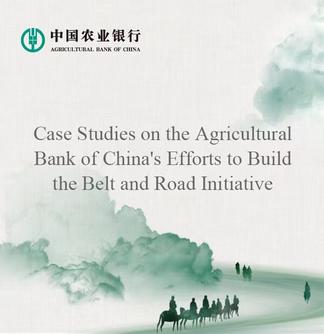
A container is lifted at Chancay Port in Peru, on Nov. 14, 2024. (Xinhua/Li Mengxin)
BEIJING, Jan. 24 (Xinhua) -- China's foreign trade has shown strong resilience in 2024, which has largely depended on the diverse trade partnerships China forged.
As a staunch supporter of inclusive economic globalization, China has been a major trading partner of more than 150 countries and regions, with 23 free trade agreements with 30 countries and regions.
-- Closer trade ties with BRI countries
The market of Belt and Road Initiative (BRI) partner countries anchors the robust performance of China's foreign trade in 2024, in the face of mounting challenges, such as sluggish global economy, shrinking external demands and rising geopolitical tensions.
For the first time, BRI partner countries accounted for more than 50 percent of China's total foreign trade value in the year 2024, with the figure reaching 50.3 percent, according to Wang Lingjun, deputy head of the General Administration of Customs (GAC), at a government press conference.
According to customs data, China's total goods imports and exports with BRI partner countries reached 22.1 trillion yuan (about 3.04 trillion U.S. dollars) last year, up 6.4 percent year on year.
Based on the production and consumption demands of BRI partner countries, China exported not only consumer goods, but also equipment and parts, promoting industrial development in these countries.
Meanwhile, characteristic products from these countries are also entering the Chinese market.
Guangzhou Light Holdings Limited, founded in 1956, is among the first batch of foreign trade enterprises in China. It has emerged as an integrated service provider for supply chain in recent years, with equal focus on imports, exports and domestic trade.
Zhai Hui, deputy general manager of the company, said that agricultural products from BRI partner countries including Russia and Kazakhstan have become the largest category in terms of import amount for the company.
The company also inked agreement with Indonesia's Kawan Lama Group, to upgrade Indonesian stores, from overall design to construction.
-- Increasing imports from developing countries
Earlier this year, a batch of frozen lamb from Madagascar arrived at Guangzhou Nansha Port. This is the second order of the Changsha-based agricultural products company, as the company saw a quick sale of 900 kilos of Malagasy lamb upon their first import in September last year. The company increased import volume this time to 66 tonnes to be delivered in three batches.
Apart from livestock products, many African agricultural products have also entered the Chinese market in recent years.
In September last year, 250 tonnes of cassia seeds were imported from Nigeria, representing the first batch of edible herbal materials imported from Africa to Hunan Province. The Province's Yueyang Customs set up a "green channel" for fresh and perishable agricultural and food products imported from Africa to achieve efficient same-day customs clearance. Yueyang Area of Hunan Pilot Free Trade Zone also introduced new measures to help enterprises save customs clearance costs.
Data showed that as a pioneering province for economic and trade cooperation with Africa, Hunan's trade with Africa has kept an annual growth rate of 23.1 percent on average over the past three years. In the first 11 months of 2024, Hunan imported African products valued at approximately 22.13 billion yuan, up 59.1 percent year on year.
China, with its huge market, is constantly offering development opportunities to African countries. In terms of market access, China has established a "green channel" for African agricultural products to be exported to China. Thanks to the special treatment, Madagascar's lamb, Nigeria's cassia seeds, Rwanda's dried chillies, Kenya's dried anchovies have been imported into Hunan for the first time. Kenya's flowers, South Africa's apples and other agricultural products have entered thousands of households in China and been well received by consumers.
Meanwhile, special products from other areas are also introduced to China. The pulse of global trade quickened as the first cargo ship, COSCO's "Xin Shanghai" cargo vessel, from Chancay Port, Peru, docked at Shanghai's Yangshan Port last December, carrying more than 4,300 TEUs of cargo, including 153 reefer containers filled with over 3,000 tonnes of Peruvian fruits such as blueberries, avocados and grapes.
The Chancay Port, a flagship BRI project, offers a new direct route to China, which is estimated to reduce the one-way shipping time between China and Peru to 23 days, saving more than 20 percent in logistics costs.
-- Emerging market with great potential
China has continuously promoted East Asia cooperation and regional economic integration and strengthened industrial chain cooperation with the Association of Southeast Asian Nations (ASEAN). According to Wang, China and the ASEAN have been each other's largest trading partners for the fifth consecutive year in 2024.
The official also said China's imports and exports to other BRICS members and partners increased by 5.5 percent last year. In addition, China strengthened economic and trade cooperation with countries and regions from Latin America, Africa, Central Asia, and Central and Eastern Europe.
China's trade partners are increasingly showing a diversified trend, said Liu Xiangdong, a researcher with the China Center for International Economic Exchanges (CCIEE), explaining that China has continued to expand markets in emerging economies such as ASEAN, Africa and Latin America, while maintaining traditional trade partners such as the United States and Europe.
Emerging market and developing countries are becoming China's major trading partners, said Liu, adding that China's foreign trade development still has great room for expansion, with the steady progress of the BRI cooperation, the improving network of high-standard free trade zones, and the continuous progress of China-Africa pragmatic cooperation.
He projected that China will make new breakthroughs in expanding trade with emerging market, especially with BRI partner countries.
(Edited by Li Shimeng with Xinhua Silk Road, lishimeng@xinhua.org)




 A single purchase
A single purchase









